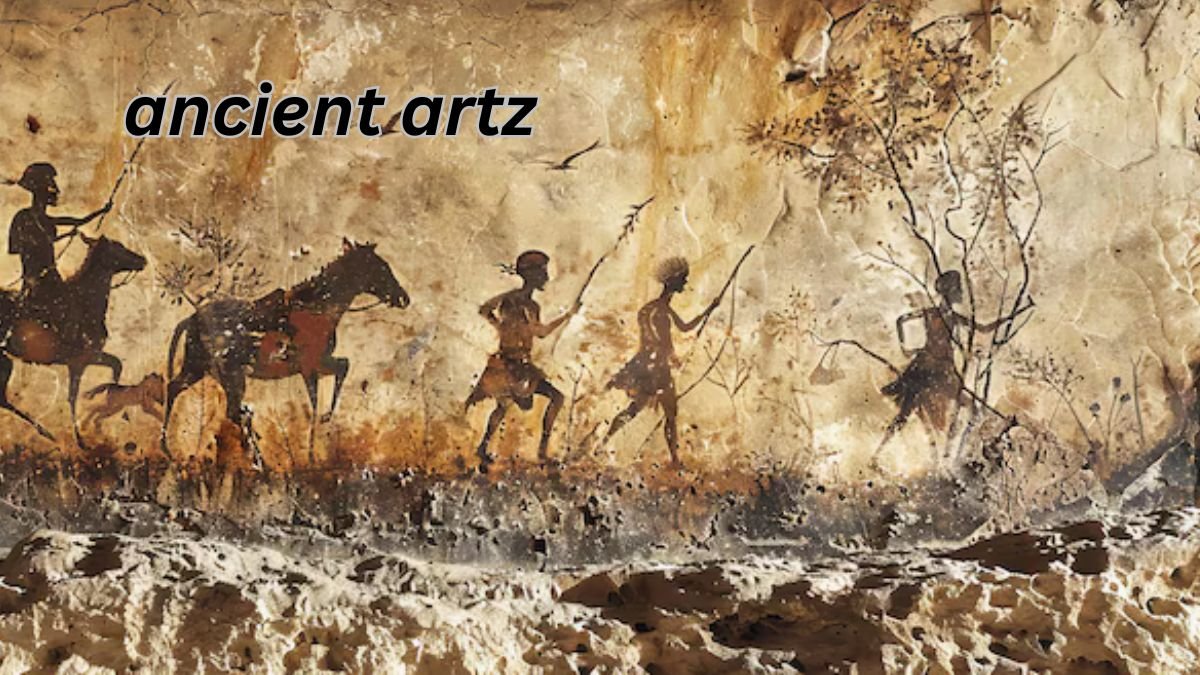Ancient art encompasses the artistic expressions of early civilizations, ranging from prehistoric times to the early Middle Ages. This art includes a wide variety of mediums and forms—sculptures, paintings, pottery, jewelry, and architectural marvels. It reflects the religious beliefs, social structures, and daily lives of our ancestors, providing us with invaluable insights into the evolution of human society.
The Origins of Ancient Art: Where It All Began
The earliest forms of art were cave paintings, carvings, and small sculptures created by early humans. These artworks, such as the famous cave paintings in Lascaux, France, date back over 17,000 years. These early expressions often featured animals, human figures, and symbols, believed to have served religious or ritualistic purposes.
Significance of Cave Paintings in Prehistoric Art
These paintings were not mere decorations; they held deeper meanings. The vibrant colors, intricate designs, and careful placement within caves indicate a sophisticated understanding of visual communication and an early form of human creativity.
Ancient Egyptian Art: A Journey Through Time
Egyptian art is perhaps the most iconic form of ancient’art, characterized by its hieroglyphics, grandiose temples, and intricate tomb paintings. From the Old Kingdom to the New Kingdom, Egyptian art maintained a consistent style that emphasized order, balance, and harmony.
The Role of Symbolism in Egyptian Art
Symbols were a crucial element in Egyptian art. The use of colors, animals, and specific gestures carried deep meanings. For example, the color green symbolized rebirth, while red represented chaos and disorder. This intricate symbolism allowed Egyptian art to convey complex spiritual ideas, helping to solidify the connection between the physical and spiritual worlds.
Read Also: The Ultimate Guide to My FWISD Apps Unlocking Digital Tools for Success
Mesopotamian Art: The Cradle of Civilization’s Masterpieces
The Mesopotamians, who lived between the Tigris and Euphrates rivers, created a distinct art style that included intricate carvings, cylinder seals, and monumental architecture such as ziggurats. Mesopotamian art primarily focused on themes of kingship, divinity, and the cosmic order, often blending the real and the supernatural.
Architecture and Sculpture in Mesopotamian Art
Ziggurats, terraced pyramid-like structures, were among the most impressive contributions of Mesopotamian art. They were not only places of worship but also a demonstration of the engineering skills of the time. Mesopotamian sculptures, like the iconic “Lamassu” (winged bull with a human head), were symbols of protection and power, placed at city gates to ward off evil spirits.
Ancient Greek Art: Birth of Classical Ideals
Ancient Greek art marks a period of extraordinary development in human history. The Greeks introduced naturalism, the idea that art should realistically represent life. Their works—be it sculptures, pottery, or architecture—emphasized balance, proportion, and beauty, qualities that would become the foundation of Western art.
Key Features of Greek Sculpture and Pottery
Greek sculpture evolved from rigid, stylized forms to more naturalistic and dynamic representations of the human body, as seen in works like “The Discobolus” by Myron. Pottery, another significant form of Greek art, often depicted scenes from mythology, daily life, and athletic competitions, serving both as decorative and functional objects.
Ancient Roman Art: The Influence of Conquest
However, the Romans made significant contributions of their own, especially in the fields of portraiture and architecture. They pioneered the use of concrete, allowing for the construction of massive structures like the Colosseum and the Pantheon.
Mosaics and Murals: Hallmarks of Roman Art
Roman mosaics and murals were common in both public and private buildings, depicting a wide range of subjects from mythological scenes to everyday life. These artworks were not only decorative but also served as a means of communicating social status and power. Roman portraiture, particularly busts of emperors and important figures emphasized realism, capturing unique facial features and expressions.
Indian Art: Spirituality and Sensuality
This is a rich tradition dating back to the Indus Valley civilization, around 2500 BCE. Indian art is deeply intertwined with religion, particularly Hinduism, Buddhism, and Jainism. The art forms include sculptures, cave paintings, and intricate carvings found in temples.
The Intricacies of Indian Temple Art
Temples like Khajuraho and Ellora are adorned with detailed sculptures that depict gods, goddesses, and various aspects of life. Indian art is notable for its sensuality and expression of divine love. The use of vibrant colors, dynamic forms, and elaborate detailing reflects the culture’s philosophical and spiritual depth.
Chinese Art: From Neolithic to Imperial Splendor
Chinese art, with a history spanning over 5,000 years, includes jade carvings, bronze work, calligraphy, and silk painting. Each dynasty contributed its unique style, from the Bronze Age artifacts of the Shang and Zhou dynasties to the classical paintings of the Tang and Song periods.
Calligraphy and Painting: The Twin Pillars of Chinese Art
Chinese calligraphy and painting are considered the highest forms of art, representing the artist’s moral integrity and spirit. Paintings often depicted landscapes, animals, and figures, characterized by delicate brushwork and an emphasis on balance and harmony.
Mesoamerican Art: Beyond the Pyramid
Mesoamerican civilizations, including the Maya, Aztecs, and Olmecs, produced extraordinary art that often centered around their cosmology and religious beliefs. Their art is most renowned for its monumental architecture, elaborate masks, and intricate ceramics.
Mayan Glyphs and Stone Carvings
Mayan art is distinguished by its glyphs—hieroglyphic symbols that were used in both writing and art. Mayan stelae, or stone monuments, were often carved with these glyphs, recording historical events and honoring rulers.
African Art: The Heartbeat of the Continent
Ancient African art, often underrepresented in mainstream discussions, is incredibly diverse, reflecting the continent’s varied cultures and histories. From the Nok terracotta figures in West Africa to the rock paintings in the Sahara, African art is characterized by its use of natural materials, symbolic forms, and a focus on community and spirituality.
The Role of Masks in African Art
Masks are a central element in African art, used in ceremonies, rituals, and festivals to connect with the spiritual world. Each mask is unique, often representing a specific deity, ancestor, or spirit. The artistry involved in creating these masks, from carving wood to adding intricate details with beads and paint, showcases a deep connection to both the spiritual and natural worlds.
The Impact of Ancient Art on Modern Culture
Ancient art continues to inspire contemporary artists and designers. Modern architecture, sculpture, and even digital art often draw from ancient techniques and styles. By studying art, we not only appreciate the creativity of our ancestors but also understand the universal human drive to express, create, and innovate.
Why Ancient’Art Remains Relevant Today
The lessons of ancient are timeless. They teach us about cultural diversity, historical context, and the human desire to make sense of the world through visual expression. Today, as we face new challenges and uncertainties, ancient provides a rich source of inspiration and a reminder of the enduring power of creativity.
Read More: The Beauty and Versatility of Gold Pendant Designs





